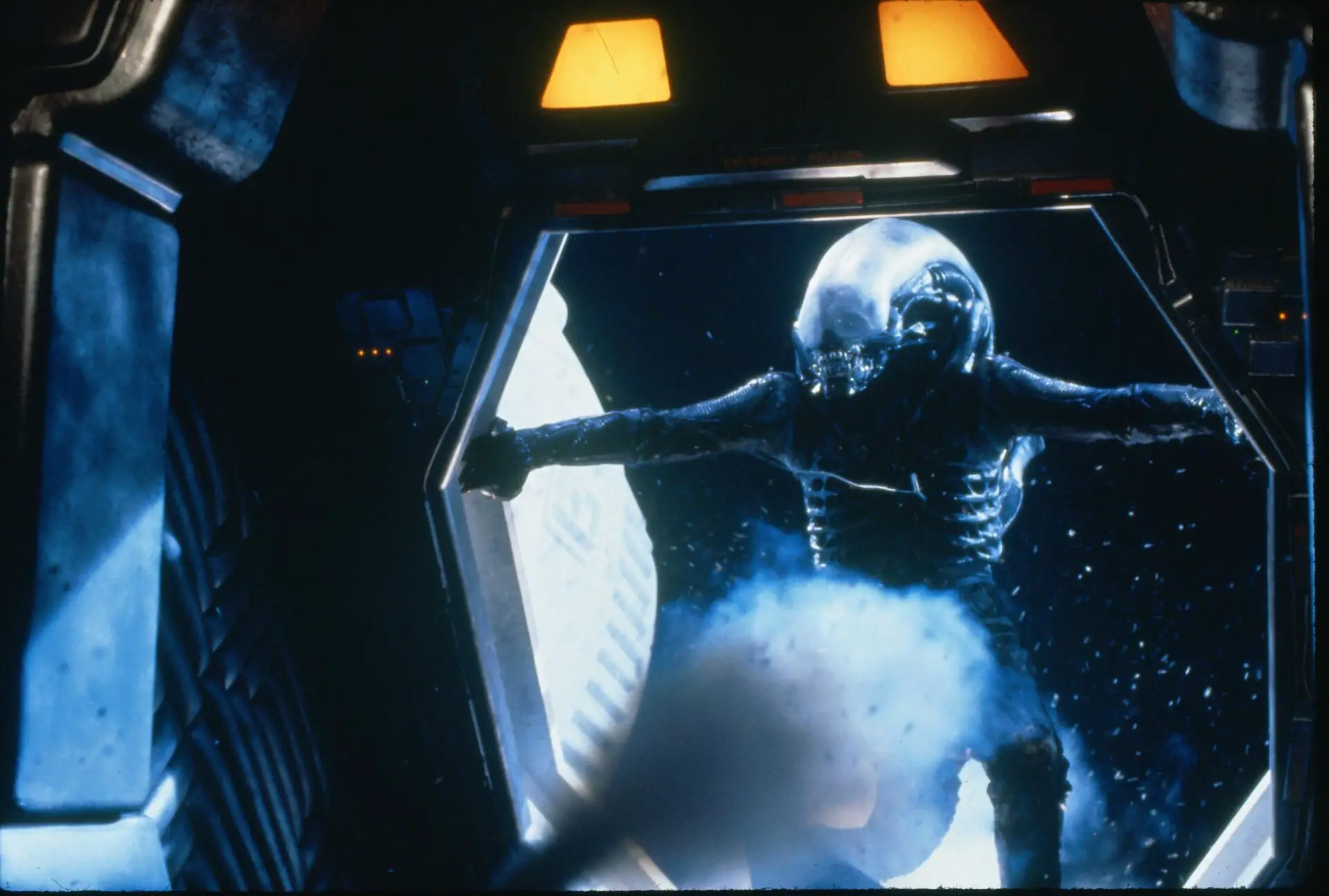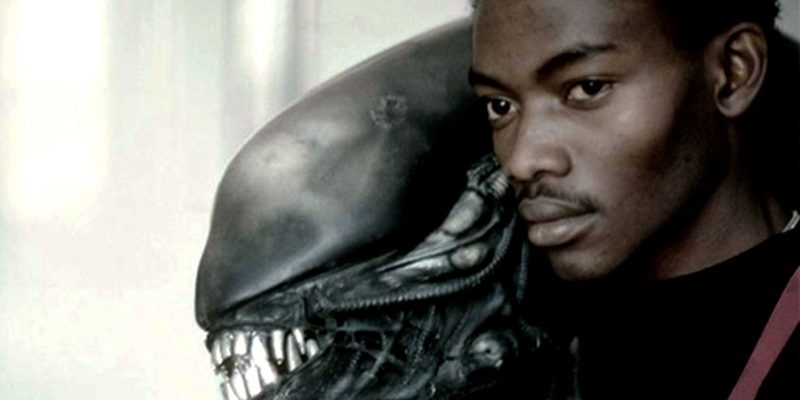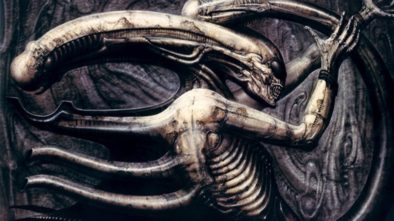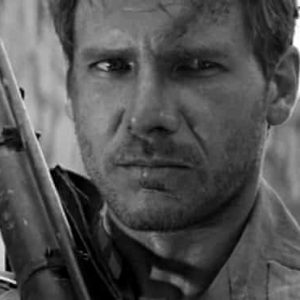Bolaji Badejo Terrified Audiences As The Xenomorph In ‘Alien’, And His Experience Inside The Suit Wasn’t Much Better
When Alien hit theaters in 1979, it introduced us to a horror icon: the Xenomorph. The towering insect-like humanoid is the epitome of H.R. Giger’s hellish biomechanical designs. Everything from its gestation to its phallic body parts emphasized Giger’s focus on the dual nature of sex and violence, and procreation and death. Equipped with an extendable jaw that jutted out violently from its throat and a deadly whipping tail that protruded from its crotch, the Xenomorph is one of the most terrifying creatures to appear onscreen.
But inside the bodysuit, as if often the case in monster movies, was a mild-mannered man, who went through his own hell playing the Xenomorph. His name was Bolaji Badejo.
Badejo isn’t a household name, and the Xenomorph is his only film credit. Born in Lagos, Nigeria, 1953, Badejo wasn’t even interested in acting when he got the part. He was studying graphic design in London when agent Peter Archer spotted him in a pub in Soho. At 6′ 10″ with a long and thin frame, Badejo was perfect to play the insect-like humanoid. “We had this vision of a praying mantis,” Associate Producer Ivor Powell told CNN in 2016. “We needed somebody incredibly tall with very long legs, so when they crouched down it gave the impression of an insect.”
Director Ridley Scott had been looking at basketball players, and had interviewed Peter Mayhew (who played Chewbacca) for the role. But when he met Badejo, he knew he had found his Xenomorph. The tall Nigerian got the part in May 1979, and was performing the Alien scenes at Shepperton Studios in August.
Weight trainers helped Badejo build up certain muscles for the part. The actor also learned Tai Chi, and went to mime lessons in preparation for learning the creature’s gliding and insect-like poses and movements. “The idea was that the creature was supposed to be graceful as well as vicious, requiring slow, deliberate movements,” Badejo told Cinemafantastique in Autumn 1979, his only interview. “But there was some action I had to do pretty quick. I remember having to kick Yaphet Kotto, throw him against the wall, and rush up to him. Veronica Cartwright was really terrified. After I fling Yaphet Kotto back with my tail, I turn to go after her, there’s blood in my mouth, and she was incredible. It wasn’t acting. She was scared.”

Image: MovieStillsDB.com
Perfectly Suited for the Part
The Xenomorph suit was applied in 15 separate pieces over a one-piece black body suit. The ribcage was put on like a sweater, over the head. The legs and hips were fitted like sleeves, the hands were gloves, and the feet were worn like shoes. The tail was a fitted appendage manipulated by a number of wires. The last piece attached was the non-mechanical head, which Badejo compared to having his head stuck in the middle of a banana.
For special effects shots, Badejo wore a separate articulated head built by Carlo Rambaldi, who built E.T. the Extraterrestrial. “It was all manual, remote-controlled,” said Bolaji. “There’s still a space in it for my head. I had it on just to make sure nothing goes wrong with the posture of the head or how tall it is in comparison to the other sequences.” Of course, the most articulated part of the head was the creature’s nasty mouth. The acid-infused drool dripping from its teeth and gums came from an unlikely source: lubricant. “They must have had about 2000 tubes of K-Y Jelly,” he said.
“We had to come up with a slime, something that didn’t affect the suit,” Special Effects Supervisor Nick Allder told CNN. “We tried wallpaper paste, all sorts, but KY Jelly just so happened to work…. We ended up phoning round every hospital and pharmacy open in the area, asking to buy as much they would let us have. We sounded like sex maniacs.”
Hell Inside The Suit
Badejo spent four months inside the constricted suit, squeezing in and out of the vents and tight spaces of the spaceship set. He was too tall for the set, which was only 6′ 6″ high. “I had to be very careful how I spun around or did anything,” explained Badejo. “It was terribly hot, especially the head. I could only have it on for about 15 or 20 minutes at a time. When I took it off, my head would be soaked”.
It could have been worse. Adller said they planned on filling a cavity in the semi-transparent head with live maggots. But “he never complained about it,” said Allder. “He really didn’t.”
The 1979 screen test below, shows Badejo’s extraordinary thin and long frame in action. In the suit, and wearing that meter-long head, Badejo looks otherworldly; though for most of Alien he lingers in the shadows.
Badejo only wore the suit when the body was on display. When only an arm or just part of the body was on view, someone else could double as the Xenomorph. For example, Badejo didn’t play the Xenomorph in the scene where Tom Skerritt confronts the creature in the cramped ventilation shaft. Some sequences used a dummy, like when Ellen Ripley (Sigourney Weaver) blasts the Xenomorph out of the shuttlecraft’s airlock and incinerates it with the ship’s exhaust.
The shuttlecraft sequences also provided the most usable footage of Badejo in the Xenomorph suit. But clambering around the bulkhead of the shuttlecraft took its toll on the suit. He said he ripped the suit two or three times climbing in and out of the confined space. And the tail kept coming off as he climbed down.
“I remember I had to repeat that action for about fifteen takes. Finally, I said, ‘No more!’ There was a lot of smoke, it was hard to breathe, and it was terribly hot.”
Only Badejo and Giger were allowed to watch the rushes of the Xenomorph footage with Scott. Together, the man who played him and the man who created him, discussed how the Xenomorph should move, act, and generally look in a shot. Scott had plenty of ideas, but Badejo said they were “impossible.”
Still, Scott pushed the limits, or to be more correct, pushed Badejo’s limits. A particularly unpleasant scene required the costumed actor to descend onto Brett (Harry Dean Stanton). Scott tried a number of setups to get the shots he wanted. In one setup, Badejo was strapped onto a large see-saw like boom arm that could be lifted straight up 20 feet. When the crew lowered the boom arm, Badejo ended upside down, and he began to feel dizzy as blood rushed to his head. Badejo told Scott he wouldn’t perform the motion again, and a stuntman replaced him. But when the stuntman was suspended upside down, he passed out! Scott then tried a dummy, but it couldn’t produce any realistic movements like a person. In the end, Scott used close-ups and quick cuts to suggest the same movement in the scene. The effect, which is shown in the footage below, produced more pulse-raising terror than if the Xenomorph was more visible.
Allder recalled that Badejo became a bit withdrawn. “He did keep inside himself, quite a bit,” the special effects supervisor remembered. “Being on a film set must have been quite strange for him. To have been the center of attraction… it was a bit of a shock to him.”
After Alien
Soon after filming Alien, Badejo said he had been given the opportunity to appear in a sequel. But he left Hollywood and returned to Nigeria in 1980, a year after the release of Alien.
In 1983, Badejo started his own art gallery in Nigeria. Unfortunately, Badejo succumbed to sickle cell disease in 1992, leaving behind two children. He was only 39.




